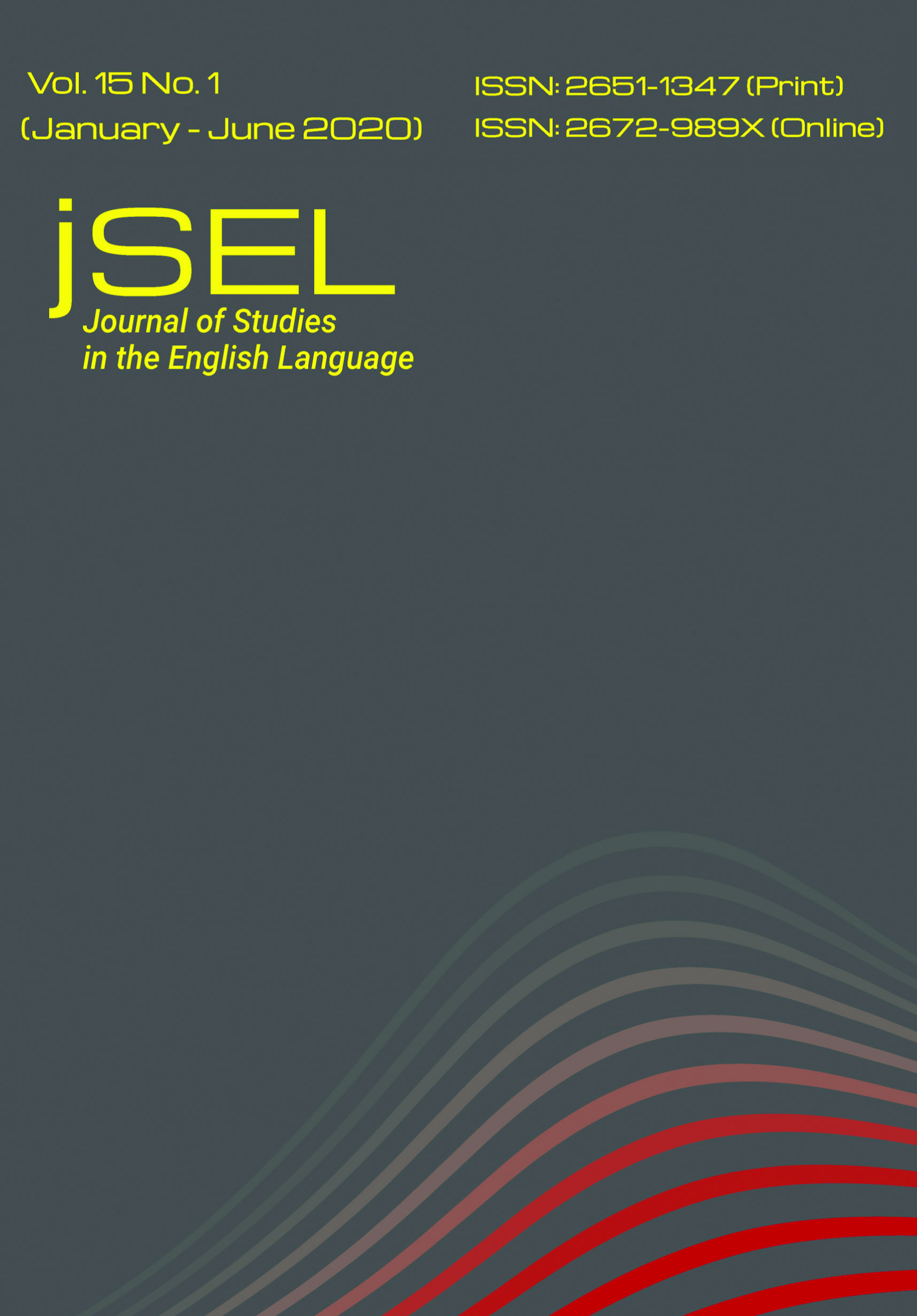The Word Lists of Hospitality Service Review Construction
Main Article Content
Abstract
Word lists have long been known as a form of learning material. Construction of any needed word lists can be a good way to facilitate student learning. As a hospitality learner, one should understand the reviews given by service users. This study aimed to construct word lists of hospitality service review. The data were collected from 30,000 reviews consisting of 3,012,612 tokens from www.tripadvisor.com. The range, frequency, keyword analysis, lexical profiling and experts’ responses were used as the criteria for constructing the word lists. Three word lists were constructed: a Tourism Review Word List (TRWL) comprising 242 words with coverage of 5.08 per cent of the Tourism Review Corpus (TRC), an Accommodation Review Word List (AcRWL) comprising 304 words with coverage of 4.24 per cent of the Accommodation Service Review Corpus (AcRC) and an Airline Review Word List (AiRWL) comprising 319 words with coverage of 4.98 per cent of the Airline Service Review Corpus (AiRC).
Article Details
References
Anthony, L. (2014). AntWordProfiler (Version 1.4.1) [Computer software]. Tokyo, Japan: Waseda University. Available from http://www.laurenceanthony.net/software
Anthony, L. (2018). AntConc (Version 3.5.7) [Computer Software]. Tokyo, Japan: Waseda University. Available from http://www.laurenceanthony.net/software
Anthony, M., & Gladkov, K. (2007). Rhetorical appeals in fundraising. In D. Biber, U. Connor, & A. Upton (Eds.), Discourse on the move: Using corpus analysis to describe discourse structure (pp. 121-151). Amsterdam, The Netherlands: John Benjamin.
Bauer, L., & Nation, P. (1993). Word families. International Journal of Lexicography, 6(4), 253-279.
Billuroglu, A, & Neufeld, S. (2007). BNL 2709: The essence of English (4th ed.). Nicosia, Cyprus: Rustem Kitabevi.
Coxhead, A. (2000). A new academic word list. TESOL Quarterly, 34(2), 213-238.
Engels, L. (1968). The fallacy of word counts. International Review of Applied Linguistics, 6,213-231.
Gardner, D., & Davies, M. (2014). A new academic vocabulary list. Applied Linguistics, 35, 305-327.
Gabrielatos, C., & Marchi, A. (2012). Keyness: Appropriate metrics and practical issues. Paper presented at Corpus-assisted Discourse Studies International Conference, Bologna, Italy.
Graham, D. (2014). Key-BNC [Computer software]. Retrieved from http://crs2.kmutt.ac.th/Key-BNC/
Hyland, H., & Tse, P. (2007). Is there an “academic vocabulary”? TESOL Quarterly, 41(2), 235-253.
Khani, R., & Tazik, K. (2013). Towards the development of an academic word list for applied linguistics research articles. RELC,44(2), 209-232.
Konstantakis, N. (2007). Creating a business word list for teaching business English. Estudios De Linguistica Inglesa Aplicada (ELIA),7, 79-102.
Laosrirattanachai, P., & Likitrattanaporn, W. (2018). A case study of English lexical competence and performance in tour conducting used by hospitality students. Veridian E-Journal, 11(4), 1157-1174.
Lei, L., & Liu, D. (2016). A new medical academic word list: A corpus-based study with enhanced methodology. Journal of English for Academic Purposes, 22(2016), 42-53.
Lindquist, H. (2009). Corpus linguistics and the description of English. Edinburgh, Scotland: Edinburgh University Press.
Lipson, M., & Wixson, K. (2012). Assessment of reading and writing difficulties: An interactive approach, student value edition (5th ed.). New York, NY: Pearson Education.
Martinez, I., Beck, S., & Panza, C. (2009). Academic vocabulary in agriculture research articles: A corpus-based study. English for Specific Purposes,28(3), 183-198.
Muñoz, L. (2015). The Vocabulary of agriculture semi-popularization articles in English: A corpus-based study. English for Specific Purposes, 45(3), 26-44.
Murray, T. (2018). The 20 most visited cities around the world in 2018. Retrieved January 6,2019 from https://www.businessinsider.com/most-visited-cities-in-the-world-2018-9.
Nagy, W. (1988). Teaching vocabulary to improve reading comprehension. Newark, DE: International Reading Association.
Nation, P. (1990). Teaching and learning vocabulary. Boston, MA: Heinle and Heinle.
Nation, P. (2001). Learning vocabulary in another language. Cambridge, England: Cambridge University Press.
Nation, P. (2005). Teaching and learning vocabulary. In E. Hinkel (Ed.), Handbook of research in second language teaching and learning. Mahwah, NJ: Lawrence Erlbaum.
Nation, P., & Waring, R. (1997). Vocabulary size, text coverage and word lists. In N. Schmitt & M. McCarthy (Eds.), Vocabulary, description, acquisition and pedagogy (pp. 6-19). New York, NY: Cambridge University Press.
Paquot, M. (2007). Towards a productively-oriented academic wordlist. In J. Walinski, K. Kredens, S. Gozdz-Roszkowski (Eds.), PALC proceedings(pp. 127-140). Frankfurt, Germany: Peter Lang.
Read, J. (1998). Validating a test to measure depth of vocabulary knowledge. In A. J. Kunnan (Ed.), Validation in language assessment: Selected papers from the 17th language testing research colloquium (pp. 41-60). Mahwah, NJ: Lawrence Erlbaum Associates.
Read, J. (2000). Assessing vocabulary. Cambridge, England: Cambridge University Press.
Ruangjaroon, S. (2013). A study of the implement of the resource: Projects play & learn 1& 4 accompanying CD-ROM and website by the ministry of education. Silpakorn University Journal, 33(2), 31-59.
Scott, M. (1997). PC analysis of key words – And key words. Systems, 25(2), 233-245.
Tangpijaikul, M. (2014). Preparing business vocabulary for the ESP classroom. RELC Journal, 45(1), 51-65.
Todd, R. (2017). An opaque engineering word list: Which words should a teacher focus on? Englishfor Specific Purposes, 45(1), 31-39.
TOEIC. (2017). 2017 Report on test takers worldwide.Retrieved January 6, 2019 from https://www.ets.org/s/toeic/pdf/2017-report-on-test-takers-worldwide.pdf
Valipouri, L., & Nassaji, H. (2013). A corpus-based study of academic vocabulary in chemistry research articles. English for Specific Purposes, 12(4), 248-263.
Wang, J., Liang, S., & Ge, G. (2008). Establishment of a medical academic word list. English for Specific Purposes, 27(4), 442-458.
Ward, J. (2005). The lexical aspect of reading English as a foreign language for engineering undergraduates (Unpublished doctoral dissertation). University of Birmingham, Birmingham, England
Ward, J. (2009). A basic engineering English word list for less proficient foundation engineering undergraduates. English for Specific Purposes, 28(3), 170-182.
West, M. (1953). A general service list of English words. London, England: Longman.
Wilkins, D. (1972). Linguistics in language teaching.London, England: Edward Arnold.
Yang, M. (2015). A nursing academic word list. Englishfor Specific Purposes, 37(1), 27-38.
Zimmerman, C. (1997). Historical trends in second language vocabulary instruction. In J. Coady & T. Huckin (Eds.), Second language vocabulary vcquisition (pp. 5-19). Cambridge, England: Cambridge University Press.


